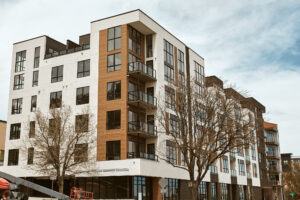Multi-Use Building Receives Depreciation Opportunities of Over $640,000 Through Cost Segregation
 After spending over $3.8 million on a construction project, the owners of a large multi-use building were seeking ways to offset expenses by minimizing their tax burden. With nearly 15,000 square feet of space, the building housed a restaurant, bar, and bowling alley, offering plenty of opportunities to reclassify real property assets within the building as personal property through the IRS-approved tax deferral strategy of Cost Segregation.
After spending over $3.8 million on a construction project, the owners of a large multi-use building were seeking ways to offset expenses by minimizing their tax burden. With nearly 15,000 square feet of space, the building housed a restaurant, bar, and bowling alley, offering plenty of opportunities to reclassify real property assets within the building as personal property through the IRS-approved tax deferral strategy of Cost Segregation.
With our unique combination of tax, engineering, and commercial property expertise, the team at CRG specializes in Cost Segregation. After reviewing the building owners’ project records, we conducted a Cost Segregation study that reallocated several items of real property as personal property assets with 5-year depreciable lives. As a result, the building owners were able to claim accelerated depreciation deductions totaling $641,114.82—representing a significant reduction of their tax burden.
What is Cost Segregation?
Generally, real property assets are depreciated over a period of 39 years, while personal property is depreciated over 5, 7, or 15 years. Therefore, when an asset’s classification is changed from real to personal property, building owners can take advantage of shorter depreciation lives and claim more substantial and immediate depreciation deductions. The mechanism for changing these classifications is a Cost Segregation study.
Cost Segregation studies examine the various assets within a commercial building—such as wall coverings, electrical and plumbing fixtures, floor coverings, and more—to identify those that may be reclassified as personal property. Any commercial buildings, including offices, restaurants, retail centers, industrial facilities, and hotels, that were placed into service after December 31, 1986 may be eligible.
While Cost Segregation may be performed at any time after a building has been purchased, built, or remodeled, the optimal time is within the first year after the building has been placed into service in order to begin maximizing depreciation deductions as soon as possible. To ensure compliance with IRS regulations, studies should be performed by a qualified third party, such as CRG.
The CRG team routinely works with building owners in a variety of industries to help them maximize available tax savings. To find out more about the opportunities that may be available to you, contact us today to schedule a consultation!